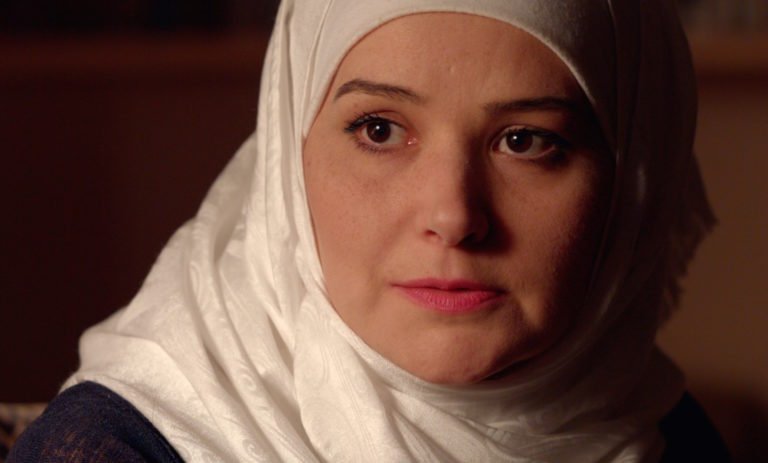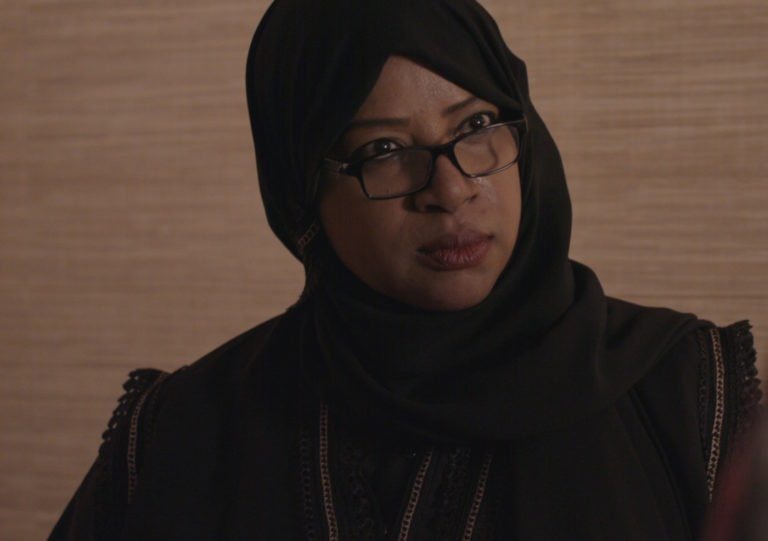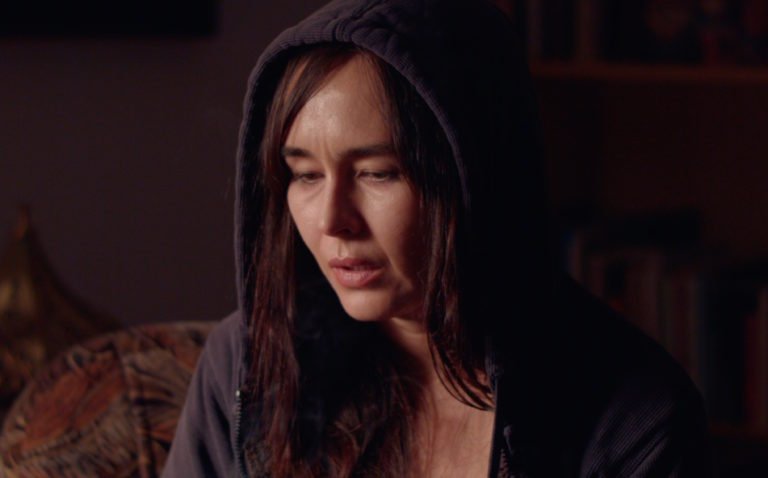Three Short Tales of Forgiveness
May 2018
In collaboration with cinematographer, sound designer and editor Omar Shoukri and actress Francesca Bizzarri we created three shorts (Man Child Woman), bundled into one, twelve minute film on the theme of forgiveness. It was shot on location in Abu Dhabi, United Arab Emirates. With the exception of Francesca, the characters are non-professional actors. The film will premier in the U.S. on May 18th, 2019 at the New Haven International Film Festival.
Our intention was to imagine and create a series of short, dynamic stories using minimal equipment and production methods. The camera work was all handheld except for the drone shots, and the lighting was ambient.
Sound Design and Music
The score for the film was composed by Omar Shoukri and cellist Alicia Rieckoff.
Sweet Forgiveness was written by Judy Whitfield and myself, and sung over the credits by the actress and singer Mary Claire Miskell
Thank you Saba Brelvi for making this argument with Omar so damn convincing
Our Actors
Francesca Bizzarri
Robert Titus
Hamza O’Brien
Marcello Messina
Jim Savio
Thanks
I’d like to thank our body-double in the desert, Antonia Castelli, for her miraculous transformation. Anna S. Balysheva, Rodrigo A. Luque, Francesco Arneodo and Goffredo Puccetti for their production help, camera stills and driving skills. Judi Olson for wardrobe consulting. Thanks also to Yasmin Barakat and her family, Joanne Savio, John Burkhart, Maruan Manaja, Bex Brian, Charles Seibert, and Angell Titus. Mateo Crus Monjaraz, thank you for your help recording Sweet Forgiveness and Nezar Andary for sharing the poem Forgiveness by Morton Marcus. And special thanks to Van Anh Bui for designing the titles, credits and the poster.
Trailer – Three Short Tales of Forgiveness
The Mussafah Quartet and Tabiib
The Mussafah Quartet was a film project, built out of four ‘shorts.’ The films combined reality with a kind of contemporary mythology or what the writer Alejo Carpentier calls the ‘marvelous real.’ These stories offer the audience another way of seeing and experiencing our role in the modern world, the same way ancient mythology reflected the pressings concerns of its time. All four films are planned to be set in Abu Dhabi, and the characters drawn from the cultural complexity of the city. One film is complete to date: Tabiib.
Tabiib was adapted from a prose poem by Morton Marcus, “The Man Who Committed Suicide,” with permission from Mark Ong and Marcus’ literary estate. The film is a story about a psychotherapist living and working in Abu Dhabi. Nearing retirement Dr. Ibrahim finds himself haunted by the stories of his patients, the death of his young son, his addiction to the news, and a secret he never should have kept. In an unexpected altering of reality he discovers something about hope and love.
Tabiib was made possible through a NYU Abu Dhabi REF (Research Enhancement Fund) Grant, the support of the NYUAD Film Program, my friend and early collaborator Nezar Andary, a generous and talented cast and crew, the Abu Dhabi municipal authorities who made our production a reality, and the shopkeepers and people living and working in the Madinat Zayed neighborhood of Abu Dhabi where much of the film was shot.
I want to thank the producer Ahmed Lotfy for helping to navigate the culture and the language of Abu Dhabi, the Director of Photography, Brandon Roots for his counsel and wonderful eye, Matt Ahl for his editing work and open heart, Alex Crowe for bringing light into the film, Adam Benobaid for his humor, poignant score and sound design, Francesca Bizzarri for her help with casting and her thoughtful attention to our ‘once were’ non-professional actors, Suha Najaar’s invaluable help on set and with the script, Alaa Swaf for the hours she spent pre-producing the set design and wardrobe…always with a smile and a work ethic not to be matched, our six student interns Koh, Andrea, Roli, Grace, YiYi and Sree who shadowed our professional crew and without whose help I don’t know how the film would have been made. To all our actors and especially to Mansoor Al Feeli for his openness and willingness to do whatever was needed to make this little film come alive. To Yasmin Barakat and Van Anh Bui for their poster designs. And to my wife Joanne: without her love, I’d be lost.
Guitar and Voice in a Sleeping City composed by Adam Benobaid
Adam Benobaid on Guitar and Dhia Fairus Shofia Fani on Vocals
Some of the crew…
Adam
Matt
Alaa & Nikhil
Roli
Brandon
Grace
Ahmed
Some of the cast…
Mansoor Al Feeli
Suha Najjar
Nikhil Chaudhary
Vivian Gutierrez
Mona Copti
Shazhad Qadir
Amal Emma Mubarak
Evangeline Kionisala
Krestina Soshnina
For I Will See You Soon – cemetery scene. Composed by Adam Benobaid
Trailer Link: https://vimeo.com/256950798/008f3f1aed
Special thanks here to artist Bahia Shehad and the singer Mai Kamal for the soundtrack in the trailer
The Al Hakawātī Project
The Al Hakawātī Story Teller Project was conceived and then further explored through a grant I received in 2016. Its intent is to foster a love of storytelling and myth-making within the diverse ethnic groups living an working in Abu Dhabi. The project involved a series of workshops on making and telling stories at two labor camps, the Filipino Women’s Safe House at the Filipino Embassy and and among the contract workers at NYU Abu Dhabi where I teach academic and creative writing. The stories in the workshops are constructed orally to avoid any stigma around writing and reading literacy, and are outlined on a chalk board. Later a student assistant types out a summary of the plot lines. This is a short sample of how one of the stories begins. It’s called The Whistler.
Image: Osman Hamdi Bey, A Young Emir Studying, 1878
The Whistler
A story collaboration between Kumar Thapa Magar, Patience Gunde, Gideon Asiimwe and Jim Savio
So far. . . .
Our story begins in a small town in Uganda’s foothills, where the weather in the summer is cool and tolerable in the winter. A river flows through the village and the surrounding hills are green and lush. There is an old belief among the people in this remote part of the country, that girls should never whistle. Those girls who do it is believed, possess mysterious powers and have the ability to communicate with animals and in some cases, the dead. Because of this they are eyed with great suspicion.
A fifteen-year girl named Barbara lives with her grandmother, Joy. They are poor and live on the outskirts of town. Barbara tends to the animals and the gardens, and maintains the old house and barns because her grandmother can no longer walk very well. Because of her responsibilities, Barbara cannot go to school. This makes her sad, but she accepts it. There is a boy in town named John, who is sixteen, and he too works on his family’s farm, but because he has brothers and sisters he is able to attend classes three days a week.
One weekend as John leads his animals out to pasture he meets the girl named Barbara. In the course of the day, he discovers something extraordinary about her. Barbara can whistle. We are not talking about your average, good whistler here, but a whistler of extraordinary talent and skill. She uses her gift to soothe the cows and goats in her herd. But it is not only the cows and goats who respond so favorably to her whistling; the birds in the woods, the panthers and reptiles and all the other creatures who live in the surrounding forest and swim in the river, all of them are calmed by Barbara’s whistling.
John feels something for Barbara but he has not yet identified it as love. He cautions her that she must keep her whistling a secret, or run the risk of angering the council of elders. But there is another girl in town who has her eyes on John. Her name is Charlotte.
Charlotte comes from a more well-to-do family. They own a store and Charlotte works there when she is not in school. One day John comes in for supplies, and she tries to convince him to go with her to hear a well-known singer who is performing in the town square that weekend. Grateful for the invitation, he tells he has to take his animals into the hills to graze and cannot attend. Suspicious, Charlotte decides to follow him.
Charlotte follows John into the countryside, staying back and hiding at the edge of the woods. A few miles outside of town she sees that someone with a small herd of cows and goats has joined him. She keeps back and cannot see who it is. She continues to follow them, when suddenly she is surprised to hear the most marvelous whistling she has ever heard. She’s enthralled and tries to get closer but fails to notice that it’s growing dark…..
NOTE: The idea would be to adapt this tale to a short screenplay format and set it within the Kenyan or Ugandan community in Abu Dhabi. It would be one of the four films in the Mussafah Quartet.
Home Sick
Home Sick is a short, multimedia experiment in documentary storytelling, that situates itself in memory, imagination, and close to the heart of one of our most basic human instincts: the longing for home. Part memoir and part transnational reflection on what home means, it is not meant to answer the question, but to instill a sense of contemplation in the audience.
























